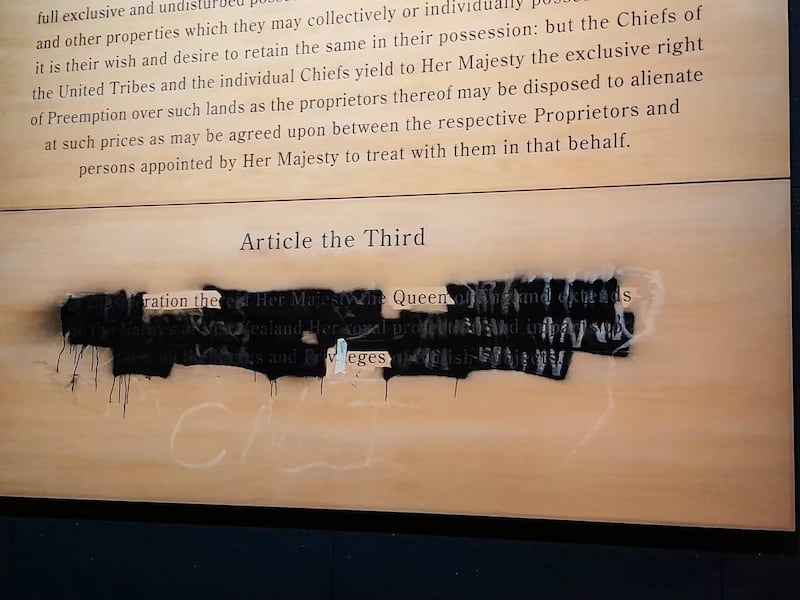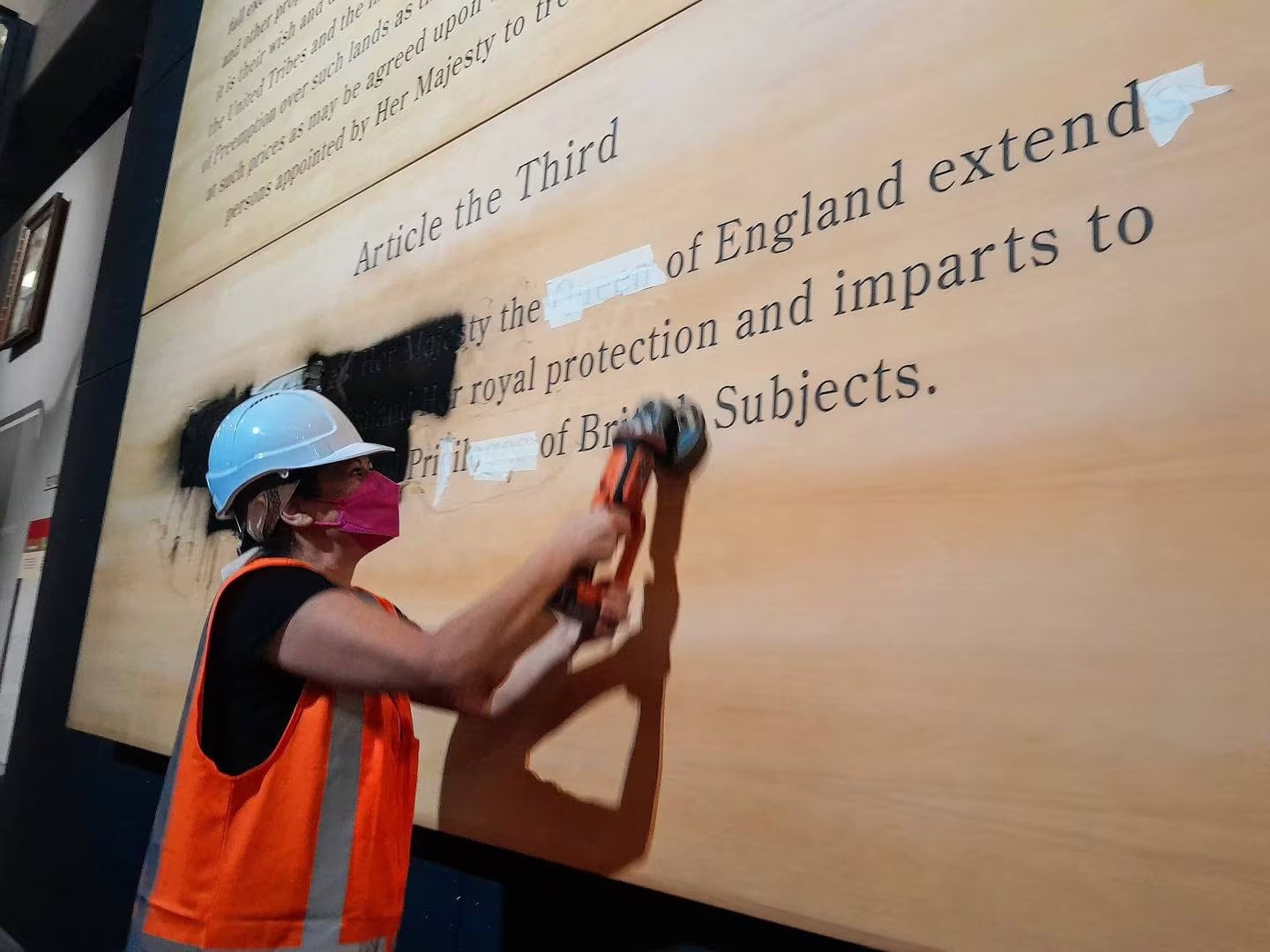Police have confirmed 12 people were arrested following a protest at Te Papa today where parts of the Treaty of Waitangi exhibition were defaced.
A 29-year-old man has been charged with intentional damage, obstructing police, and breach of bail.
A 53-year-old woman has been charged with intentional damage.
A 46-year-old man and 52-year-old woman have been charged with breach of bail.
Earlier, Police were called to Te Papa after protestors entered the museums level 4 and using a power tool and spray paint, defaced the Treaty of Waitangi exhibition.
A police spokesperson told the NZ Herald the protester used an angle grinder and spray paint to black out parts of the exhibition.
He is one of several people arrested for vandalising the Treaty exhibition inside the museum.
A group of protesters entered Te Papa level 4 at midday and began defacing parts of the exhibition.
Police say they will provide an update on the number of those arrested and charges faced later this afternoon.
The protesters are part of a group called Te Waka Hourua, which has previously called for Te Papa to take down the English version of the Treaty of Waitangi which hangs across from Te Tiriti O Waitangi on level 4 of Te Papa.
Video posted on social media shows a protestor speaking over a megaphone to those gathered at Te Papa.
He said the translation of the Treaty said “our tupuna ceded sovereignty to the Crown”.
“That’s a lie,” he said.
“We are here to tell Te Papa to tell the truth. Perpetuating these lies, the destruction of indigenous communities, that is what is destroying our planet.”

He said people were being held in a “colonial trance”, “keeping us from being able to imagine any other way of existence”.
In 2021 the group protested across Wellington including Parliament and Te Papa, calling for the English version to be taken down.
Today’s action follows this and Haimana Hirini, a spokesperson for the group, said the English version “misleads visitors” by making them think it is a translation of Te Tiriti.
“It most certainly is not. While Te Tiriti affirms Māori sovereignty, the English document says it was ceded,” Hirini said.
“While the English document holds a distinct place in our nation’s history, it is not a translation of Te Tiriti o Waitangi and holds no legal standing. Te Tiriti, in te reo Māori, is the only legitimate, legally binding agreement.”
“The miseducation around Te Tiriti has resulted in a population that is ignorant of the promises made to Māori, leading to fearfulness and division. This is why it is so important that our national museum provides clarity and displays an accurate translation for all New Zealanders to be able to read and understand,” Hirini said.
Te Papa spokeswoman Kate Camp said the wooden display panel showing the English translation of Te Tiriti o Waitangi was damaged with spray paint and some kind of power tool.
No museum collection items were damaged, Camp said.
The museum’s fourth floor will remain closed for the rest of the day and the Signs of a Nation display where the protest occurred is closed until further notice.
“Our focus is on the safety of everyone in our museum, and on the protection of the taonga in our care,” Camp said.
“We respect the right of people to express their views and to protest but we are disappointed that the group has damaged this museum display.”
Camp said the display shows English and te reo Māori versions of the Treaty and the information panels highlighted the differences.
Level Four of the museum has been closed to the public.



